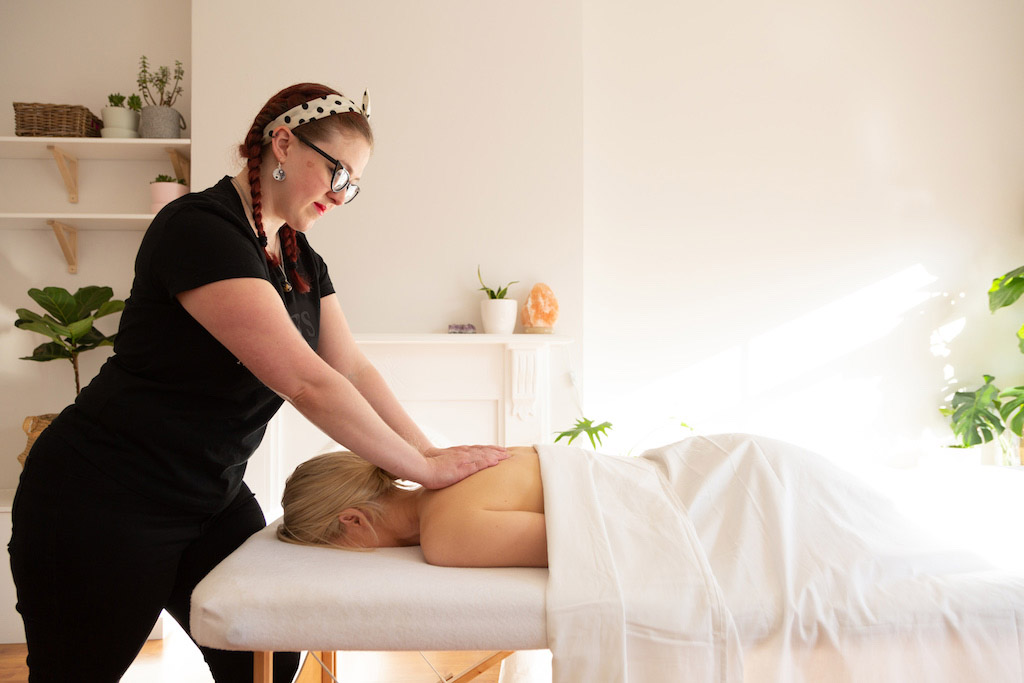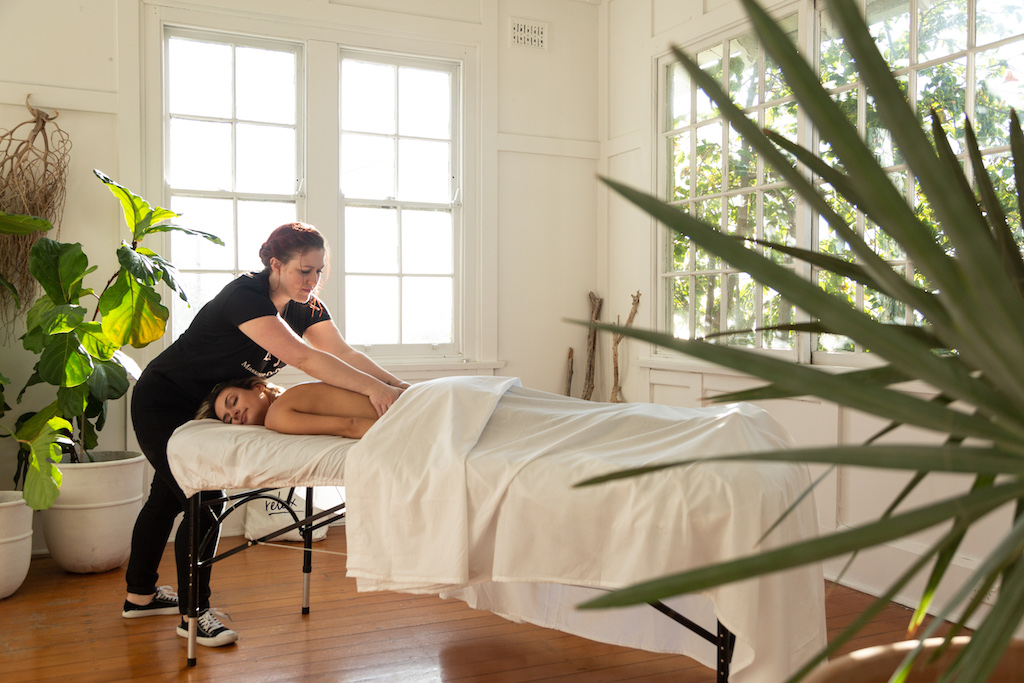When optimal body mechanics is practiced, you are able to pick up on the tension in your client’s body rather than your own. Proper body mechanics allows you to focus completely on your client’s comfort without sacrificing your own.
Here are a few tips from one of our top therapists on how to use proper body mechanics:
How to Transfer Force from the Ground Up Through a Connected Body
By Melanie Lindenthal
Stability: Your centre of gravity is just below your bellybutton, at the centre of your abdomen. This needs to be within your base of support, usually your feet contacting the floor, but also including any other parts of your body on contact with a solid surface like leaning your hip against the massage table. The longer side of the base of support provides more stability than the shorter side. To exert force, align your stance parallel to the vector of the force. For example: to compress tissue in front of you, stand in lunge position with front foot close to the targeted area and the back foot further away – not horse stance (unless you want to work in frontal plane).

Use your core muscles, including gently engaging your pelvic floor.
Reduce the leaking of force by remembering shoulders down, elbows down, heels down. Stabilize your shoulders/scapulas and connect them to your ribcage, spine, and pelvis. Keep your head in line with your spine.
Stacking your joints: Make sure your thumb/finger joints, wrist and elbow are in line (either straight or gentle even curve) and avoid excessive flexion or hyper-extension in any single one of the joints. If any of your joints are already achy, check if there is any part of your routines that overly stresses that joint and find ways to reduce the strain (change angles, change tool, brace etc). For example, when palming down a client’s back in chair massage, switch to using soft fists (wrists straight-ish) when you feel your wrists getting too strained by the extension of using your palms.
Brace to support vulnerable joints. Bracing the relaxed thumb of one hand with the other’s ‘heel palm’, combine the sensitivity of your thumb with the force generated by your other arm, brace one thumb with the other fingers of one hand, one finger with a neighbouring finger, etc.

Increase use of forearms and elbows to give your hands a break.
Explore different qualities of touch and pressure: ulna (bony, sharp; hand turned with thumb pointing up) versus flexor side of the forearm (broader and softer surface, palm facing down); flat of the elbow versus. point of the elbow. Play with transitions between and combinations of them: rolling/turning/torqueing, ratcheting, hook in and drag, etc. As always, it is important to avoid using bone on bone.
Reduce your workload by making use of stretching techniques. These can do some of to the work for you. Or, try bolstering both of the client’s shoulders while they’re in prone (eg. with rolled towels under both shoulders), which is a slow, gentle stretch for the anterior chest/pecs, and softens tight rhomboids so they are easier to work on.
Check and adjust table height, especially when not working with your own equipment, and depending on the size of client.
Check your distance, especially. with chair/roving massage – be close enough (same principle as not lifting something heavy far away from your body).

Don’t use more pressure than actually necessary. For example, just “ischemic pressure” for trigger points. Too much pressure (causing pain) can lead to the muscles tensing up as they brace themselves against the perceived threat. “No pain, no gain” does not apply as it is counterproductive. In the end, a relaxed nervous system will relax the muscles, too.
Use large muscles and joints to save the small joints and muscles of your hands. Move your body, not just your thumbs/fingers/hands.
In a nutshell:
When you practice good body mechanics, you align your body in a posture that places the least amount of stress on your musculoskeletal system. This way, you can use the strength and momentum of your entire body to create movement, rather than using the smaller, more fragile parts of your body that are more easily injured. When your body moves as a unified whole, your movements can be more flowing, relaxed, even and controlled.
Body mechanics are important to be aware of during all styles of massage. This includes table massage, chair massage, and when using other massage equipment. Use your tools to your advantage to maximise your endurance during a massage.
Sometimes what a massage therapist needs is a massage of their own. Head to remedial massage Sydney and get blyssed today. Check out what other locations we serve and help spread the good vibes to Australians everywhere.
